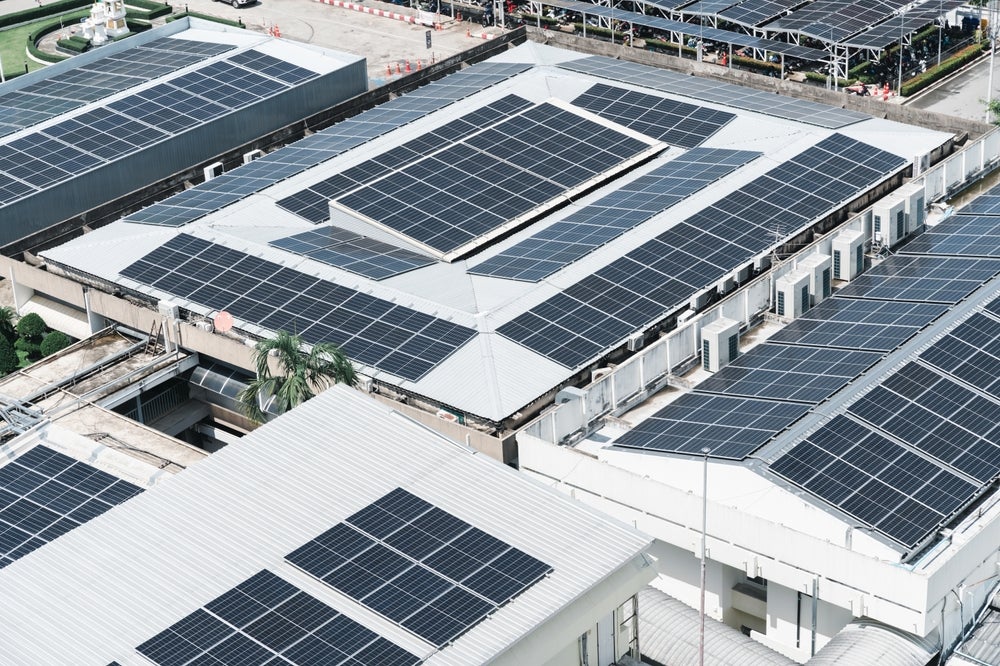Fashion
Explainer: Why fashion brands must embrace collective financing

Credit: Shutterstock.
With 90% of emissions caused by the fashion sector stemming from its supply chain, the industry will need to work collaboratively with manufacturers and suppliers to tackle the issue. And collective financing for sustainable innovations could play a key role.
Speaking at the Global Fashion Summit in Copenhagen, Paul Polman, ex-Unilever CEO, campaigner and co-author of Net Positive, hopes that in five years time the fashion industry will be able to look back at the current “pivotal moment” in the climate change movement and say it did all it could.
The role of fashion brands in collective financing
Polman explains the role of fashion brands does not lie in directly financing the investments themselves – this is a job for banks – but in providing guarantees and committing to purchasing from sustainable suppliers to allow manufacturers to access better deals.
Adam Karlsson, chief financial officer at the Swedish fashion giant H&M Group, notes investing for change is “nothing new” for the company, having previously backed the move toward digitalisation.
Karlsson says the rationale was that sustainability was going to be essential in the long-term, but also that sustainability was good business “here and now” as consumers show increasing preference for green products.
Renewable energy projects already underway
At COP28 fashion brands H&M and Bestseller shared their involvement in plans to develop an offshore wind energy project in Bangladesh.
Access the most comprehensive Company Profiles
on the market, powered by GlobalData. Save hours of research. Gain competitive edge.

Company Profile – free
sample
Your download email will arrive shortly
We are confident about the
unique
quality of our Company Profiles. However, we want you to make the most
beneficial
decision for your business, so we offer a free sample that you can download by
submitting the below form
By GlobalData
The project is the first large-scale offshore wind park in the country and benefitted from a $100m investment from the two brands.
Global Fashion Agenda’s Thomas Tochtermann describes the deal as “the first of its kind”. He adds that it is a bold move to invest in energy supply for a sector that owns very little of its own manufacturing equipment facilities, but necessary given that most manufacturing nations lack access to renewable energy sources.
“In the global scale, this is just a drop in the ocean but in Bangladesh, this will supply 10-15% of the energy needs of the fashion sector,” Tochtermann adds.
Polman argues that helping manufacturers switch to renewable energy sources should be a priority for fashion brands, with a focus on factories that are still powered by coal.
However, he points out that this is one area where suppliers will need support and is calling for collective financing for the switch, stating: “Individual suppliers simply cannot do that by themselves.”
Financing ambitious goals
Harish Ahuja, managing director and chairperson at apparel manufacturer Shahi Exports, which owns more than 50 manufacturing factories and three textile mills across India, tells attendees the company has been investing in solar and wind power since 2018.
Shahi Exports has invested in 93 megawatts of solar and wind power so far and aims to add another 55 megawatts of renewable power this year. By 2026, it aims to source 100% of its energy from renewable sources.
In 2023, Shahi Exports became the ‘first’ Indian mill to undergo the YESS assessment, which aims to establish a transparent and forced labour-free supply chain for cotton, aligning with the increasing global efforts to strengthen due diligence and sourcing standards.
“We have been able to do this because of the support from the state government,” Ahuja explains.
However, he acknowledges there are concerns around the storage of energy from renewable sources. As factories need power constantly, it can be a challenge. He suggests that fashion works with the technology sector, which is also looking to improve its use and storage of renewable energy.
Using collective financing to push for change
Ahuja also suggests the fashion sector might need to look at its methods of ordering stock. “We have a problem of overproduction,” he explains, adding the sector sees a lot of products wasted after no longer being required.
“This affects the balance sheet of brands too,” he notes. Recent examples have seen fashion retailers citing “unseasonable weather” in financial reporting as they struggle to shift inappropriate stock in unusually warm autumns and winters.
“If they can find a means to forecast better, and better understand what is required, this will bring definite control over the environment and benefit their balance sheet,” adds Ahuja.
Karlsson echoes these sentiments and says the move towards a sustainable industry will need to be a “collaborative journey”. He points out pending legislation, primarily in the EU, will further encourage fashion brands toward long-term investments.
“In my view, a sustainable business needs to be profitable, but you can only be a profitable business in the long-term if you are sustainable,” he continues.
However, Karlsson adds the H&M Group cannot change the sector by itself. “We can encourage and drive the industry, but we need the industry to come with us,” he concludes. “We will not be able to do this on our own.”











